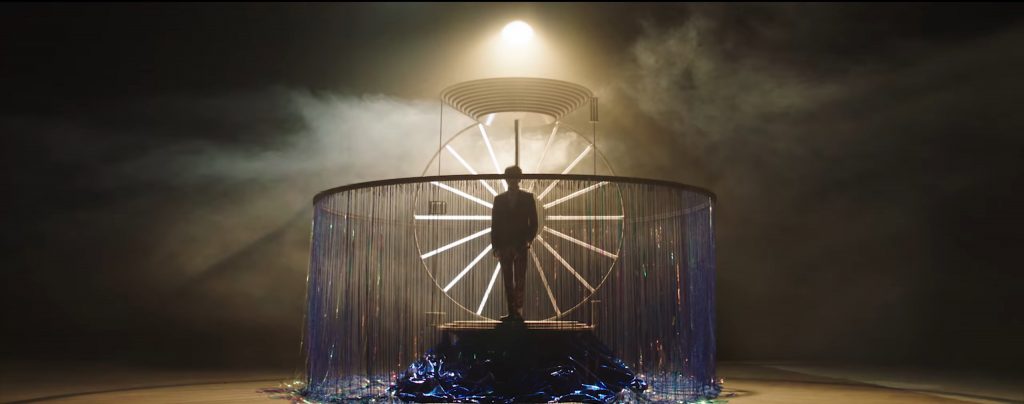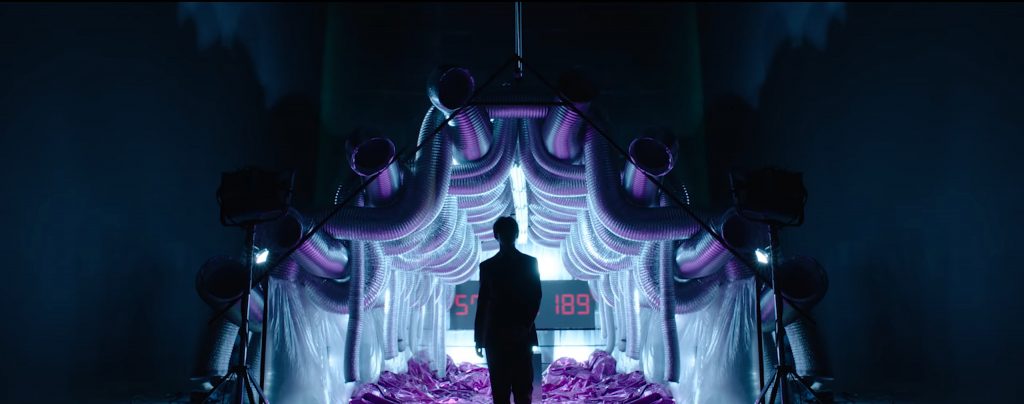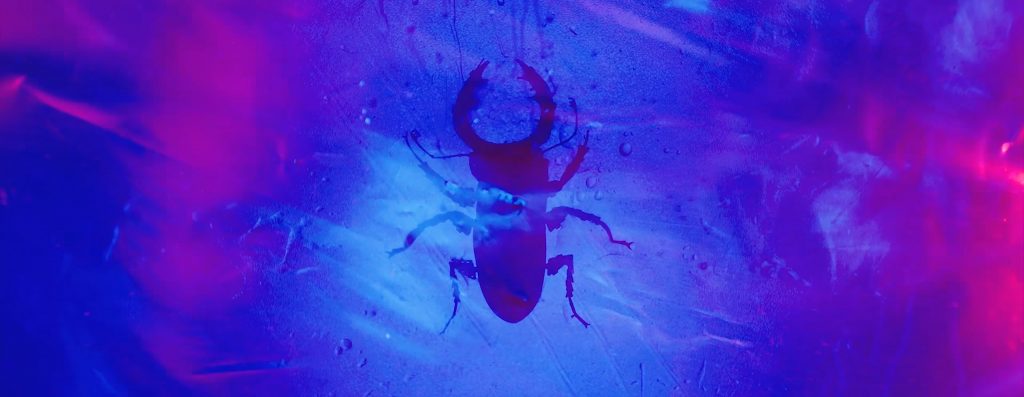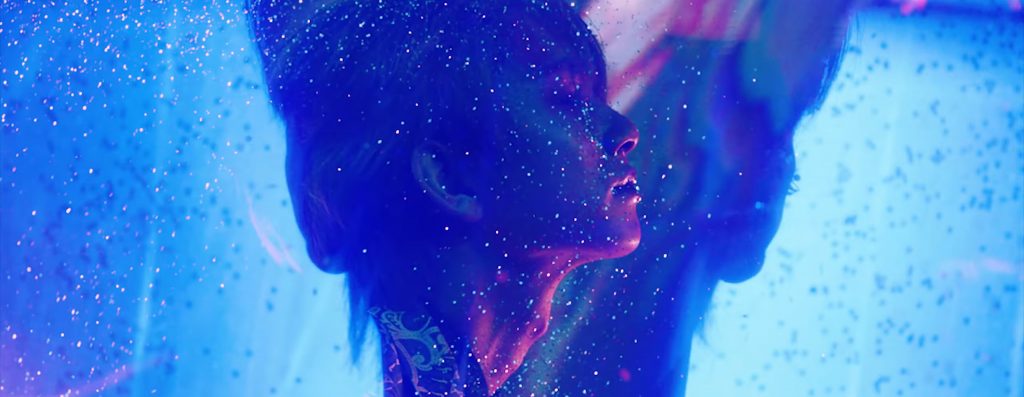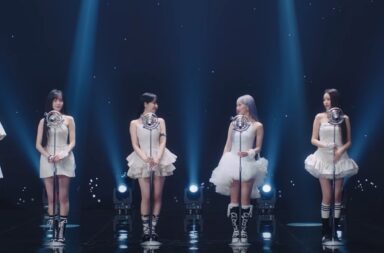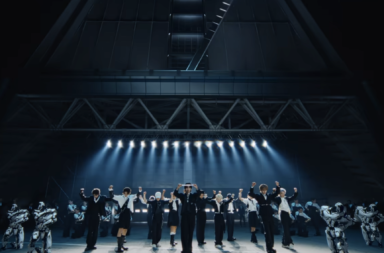“There’s a picture of Uncle Walt up there. What does he remind you of? Don’t think, answer. Go on.”
“A m- m- m- madman.”
“What kind of madman?”
“A cr- crazy madman.”
“No, you can do better than that. Free up your mind. Use your imagination. Say the first thing that pops into your head even if it’s total gibberish.”
“A- A- A sweaty- toothed madman.”
“Good God, boy, there’s a poet in you after all! There. Close your eyes. Close them.
Now, describe what you see.”

So begins one of the most iconic moments of Dead Poets Society. This scene sees an eccentric English teacher pushing a student with severe self-esteem issues and a fear of public speaking to create a poem, impromptu, in front of his laughing classmates. Seventeen‘s prologue trailer, “An Ode 1: Unchained Melody”, boldly references the film, recreating this scene in a shot that encircles S. Coups as he covers Woozi‘s eyes with his hand.
More than two months in the making, this comeback presents its climax in a spellbinding MV for title track “Poison: Fear”. The puzzle pieces presented by the prologue film fall into place, shedding light on the logic behind its artistic choices. Through combining contrasting Romantic images of nature with futuristic, artificial settings and props, “Poison: Fear” paints a deeply unsettling, poignant picture of Seventeen’s darkest artistic fears.
As Seventeen’s first foray into a symbolic MV with literary allusions, “Poison: Fear” is incredibly coherent and effective. It reworks myth and film into a rich visual text that tells a deeply personal story. Its evocations of Seventeen’s fears are a natural progression from their earlier MVs infused with their personal voices: from the warmth and gratitude of “Thanks”, to the mix of reassurance and uncertainty in “Home”, to the bleak vulnerability on display here. It is a testament to the skill and vision of producers Rigend Film—who were behind Taemin‘s beguiling “Want” MV—that for all its complexity, the MV stays true to Seventeen’s trademark simplicity, play with contrasts, and direct emotional impact.

The MV appears to be heavily inspired by images prominent in literary Romanticism (the poetic movement turned towards nature and the human inner world of emotions). But its evocations of natural imagery are always interwoven with futuristic, artificial elements.
The opening shot contrasts smoke with an inlaid image of Seventeen, digitally manipulated to look like a mirage. Part of Wonwoo‘s set is made of light tubes attached to a circular metal frame, resembling the sun. Silver air conditioning ducts are neatly threaded together like a nest of worms, set against a backdrop with a faint glow of an aurora cast over the silhouette of an ancient forest.
The significance of these aesthetic choices may not be clear upon first viewing, but their emotional effect is immediate. By juxtaposing the natural against the manmade, while also melding the two together, the MV creates a sense of defamiliarisation. The effect is puzzling and unsettling. We don’t expect to see rose petals cling-wrapped to Hoshi‘s arm, or to see The8 wearing an elegant, floral-printed coat while dancing in an industrial set.
A closer look at the images in the MV, paired with an understanding of the song’s lyrics, reveals the fears that these symbolic elements represent. The most critical of these is the fear of time running out. “Although I know there’s no such thing as forever / I can’t end [this],” Joshua sings; in the industrial set, a large timer counts down the seconds. In Wonwoo’s set, the circle of light tubes light up in a clockwise direction, almost like the hands of a clock that’s moving too fast.

The key to contextualising this fear lies in Dino‘s set: a smouldering stage with a row of unplugged microphones suspended overhead. It’s no coincidence that there are 12 mics here: their presence implies the absence of the other members. The skewed backdrop and smoke rising from the stage, signs of destruction and ruin, suggest that this set symbolises the end of Seventeen’s time as a group. Put together with the images of time running out, Seventeen’s fear of their idol career ending surfaces.

In light of this, the significance of other images begins to emerge. The wrecked car points to a metaphorical death—the end of Seventeen’s time as a group and as idols. The roses that surround Jeonghan capture their passion as performers, but also the transience of their beauty, for flowers must wilt. The cling wrap that binds roses to Hoshi’s arm appears as a desperate attempt to preserve the flowers. Yet this effort proves futile, as the same image is later framed by a shot of falling flowers.
In addition, issues tied to self-perception and self-esteem are hinted at through the repeated use of shards of a broken mirror. Seungkwan holds up a fragment to reveal an incomplete—and hence distorted—view of himself. The shards are strewn between the red roses that Jeonghan lies next to, and they form DK’s aforementioned mask. A perfect image of Jun vanishes in the blink of an eye, replaced by a view of him that’s partially veiled by long strips of shiny streamers.

In one of the eeriest and memorable scenes of the MV, Jeonghan appears dressed in full white, washed out by blinding white lights. The efforts to make him look attractive—blue contact lenses, a smear of red lipstick, a flash of red lighting common in K-pop MVs—only make him appear less human, and more ghostly and frightening. This hints at the fine line that Seventeen, as idols, tread between looking appealing and being so heavily made-up that they become unrecognisable.
The MV paints a striking picture of the deep-seated fears that Seventeen harbour as idols, but it has more to offer. It’s not just a visual collection of Seventeen’s fears, but also a dramatisation of the moment they confront these fears. The first clue to this narrative lies in the most puzzling image of the MV: the stag beetle.
In Greek mythology, the stag beetle is the metamorphosis of Poseidon’s grandson, Cerambus, who was a talented musician. After Cerambus forsook the kindness of nymphs who were enraptured by his music, they turned him into a stag beetle, and let his livestock disappear into an oncoming snowstorm. In “Poison: Fear”, a match cut between the stag beetle and Joshua sets up a connection between them. Snow is present in several of S.Coups’ scenes, an element that bears no apparent connection to the rest of the images in the MV, except for the fact that it’s also a natural image.
The connection to the myth is strengthened by the fact that Seventeen are musicians, making the nymphs in the story their fans, whom they are in danger of taking for granted. By establishing the connection to the Cerambus myth early on, the MV paves the way for the rest of the story to unfold. Losing the support of fans is any idol’s fast lane towards the end of their career, and so the outpouring of fears discussed earlier makes sense.
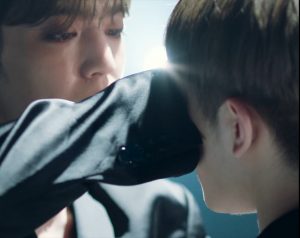
But the myth ends with no act of reconciliation on Cerambus’ part, and so “Poison: Fear” borrows from Dead Poets Society. The scene referenced in the introduction depicts a student confronting his fear of his own inadequacy with the help of his teacher. Seventeen’s Mr. Keating is S.Coups, and their Todd Anderson is Woozi. It’s apt that their leader represents the braver part of themselves, while the self-producing group’s songwriter stands for their artistic fears.
Across the MV, S.Coups appears in each of the sets, looking at them and registering the fears they represent. As the countdown timer hits zero, S.Coups and Woozi face each other; Seventeen are ready to confront their fears. Whether they overcome these fears successfully is secondary. They’ve already taken the first, hardest step, to look their fear in the eye.
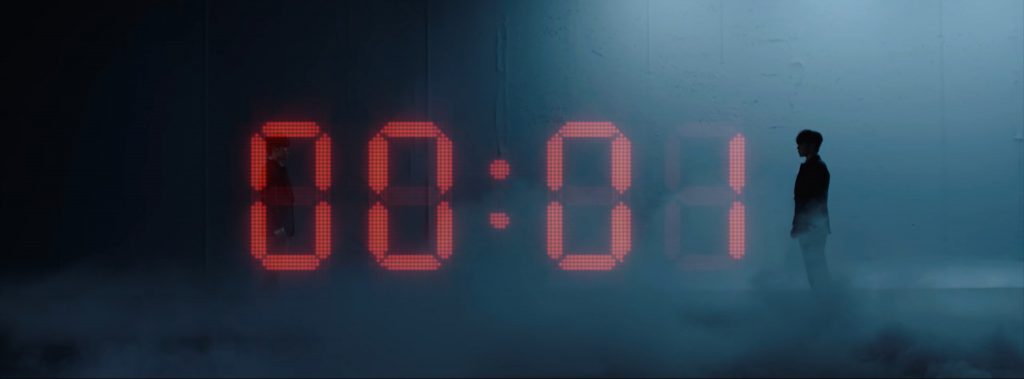
(YouTube. Images via Pledis Entertainment. Lyrics translated via Melon. Google Arts and Culture, Poetry Foundation.)
